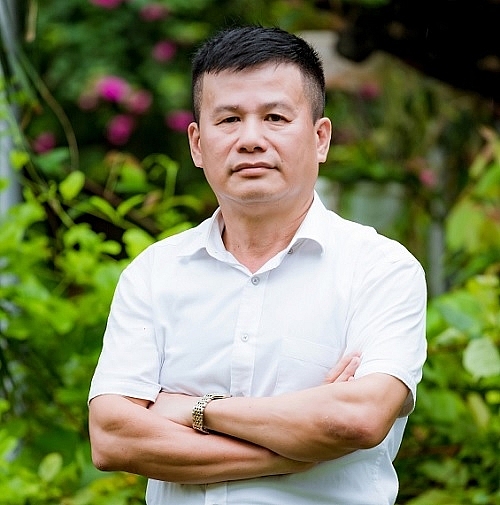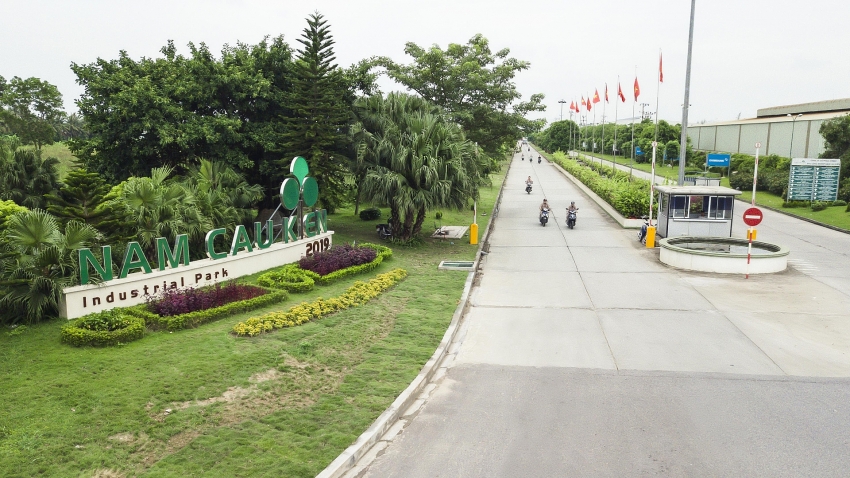Towards successful eco-IP model
 |
| Pham Hong Diep, chairman of Shinec JSC, the investor of Nam Cau Kien IP |
Nam Cau Kien Industrial Park has kicked-off construction 12 years ago. What development approach did you take with this IP?
In fact, the concept of industrial park (IP) has been around for a long time in the world and there have been many successful IP models. Personally, when I started implementing industrial infrastructure at Nam Cau Kien, I studied the IP models extensively. At that time, I was quite interested in the IP model. However, the legal corridor for this model in Vietnam has not yet been developed.
It was not until in 2014, when the Ministry of Planning and Investment (MPI) and the United Nations Industrial Development Organization (UNIDO) rolled out their initiative to create a sustainable IP model in Vietnam, that the eco-IP concept was noticed by industrial infrastructure investors as well as secondary investors.
According to a summary of three years of project implementation by the MPI and UNIDO, 72 enterprises participating in the programme in three pilot industrial zones have applied solutions for resource efficiency and cleaner production (RECP), helping to save electricity, water, and materials worth VND75 billion($3.26 million) annually through cutting about 17.8 million kWh of electricity, 429,000 cubic metres of water, and a significant amount of raw materials and fuel. Notably, the environmental benefits from this programme are 24.89 tonnes CO2 reduction each year; 4 tonnes of chemicals, 3,335 tonnes of solid waste, and 429 cubic metres of wastewater.
Based on the positive results of the IP initiative, the MPI advised the government to promulgate Decree No.82/2018/ND-CP regulating the management of IPs and economic zones.
This decree decree clarified many concepts related to IPs to encourage and support investors and enterprises to join development. Specifically, Decree 82 stipulates a number of criteria for IPs such as at least 25 per cent of the area needs to be reserved for green spaces, while traffic and service infrastructure is shared among tenants. Additionally, at least 90 per cent of enterprises in the IP have knowledge about RECP and at least 20 per cent apply RECP solutions. Another criteria is that at least 10 per cent of enterprises in industrial zones plan to participate in industrial linkages for mutual benefits.
Since the issuance of Decree 82, Shinec JSC has adjusted its investment to turn Nam Cau Kien IP into an eco-IP.
After 12 years of construction, has Nam Cau Kien IP met the criteria of Decree 82 yet?
Although it is not part of the group of industrial zones piloting the construction of the eco-IP model, Nam Cau Kien IP from the beginning was shaped in this direction. When Decree 82 was released, we have adjusted our plans to match the new criteria.
Nam Cau Kien IP sprawls on 263 hectares, with the first phase of 103ha already filled up with 55 secondary enterprises who have been operating stably, forming a symbiotic ecosystem between businesses in a circular direction.
 |
| Green space covers more than 31 per cent in Nam Cau Kien IP |
Up to now, Nam Cau Kien IP has basically completed eight criteria specified in Decree 82. For example, the area for green trees, transportation, shared service infrastructure is 82.01 ha, accounting for 31.1 per cent, whereas Decree 82 requires only 25-30 per cent.
Industrial symbiosis factors in Nam Cau Kien IP have also been formed with three main groups, including symbiotic association in metallurgy, mechanics; electronic industry symbiotic links and electronic auxiliary industries; symbiotic links in the plastics industry and plastic products.
These symbiotic groups have made maximum use of renewable materials, following the principle that the waste of one enterprise is the input of another, so there is no waste leaving the IP.
| Nam Cau Kien is also at the forefront in saving natural resources, using clean energy sources in industrial development. |
Nam Cau Kien is also at the forefront of saving natural resources and using clean energy sources in industrial development. This is ensured by the project of grid-connected rooftop solar panels equipped on the factories in the IP; a circular wastewater treatment system for the entire IP that returns treated water for production activities, thereby forming an energy circulation ecosystem in the IP. Enterprises applying this model can reduce 5-10 per cent of the unit price of electricity used and 20 per cent pf the cost of using clean water.
In 2018, not stopping at meeting the criteria of domestic ecological industrial zones, Nam Cau Kien has implemented a strategic co-operation with the Center for Carbon Mitigation in Asia, Kitakyushu City Ecotown Center (Japan) via a signed MoU on cooperation on piloting the construction of an ecological IP model in Nam Cau Kien. Since then, we have been gradually raising our eco-IP standards, aiming to attract Japanese investors.
In order to create and accumulate more ecological values, in August 2020 Nam Cau Kien started construction of the Japanese garden project Kyosei-no-niwa.
Previously, in December 2019, Haiphong selected Nam Cau Kien IP as the pilot unit to build an ecological IP, adding it to the plan to promote the green growth of Haiphong city.
As an investor in IP infrastructure development, do you still see shortcomings and difficulties in policies during construction?
Building an eco-IP in Vietnam still has many challenges due to the lack of guiding documents or evaluation standards to review and recognise eco-industrial zones. Decree 82 alone is not enough.
The conversion of traditional industrial zones under Decree 82 is having problems with some of the criteria, such as those to the proportion of trees or the establishment of industrial symbiotic links, which depend a great deal on the policies of the locality where the IP is formed.
Investing in an eco-industrial zone requires larger investment capital than usual and the payback time is also slower due to the reduced land use ratio as well as reduced build density. Attracting secondary investors to form symbiotic links needs to be carried out on a selective basis so that it is important to work out general orientations on local industrial development, and IZ development orientations following symbiosis and eco model to avoid unequal competition among industrial zones in the same area.
In my opinion, eco-industrial zones with a circular business ecosystem could increase profit by 10-15 per cent for secondary investors, who, in turn, would make bigger tax contributions. Thus, investors, enterprises, and local governments all win. Therefore, the construction of eco-industrial zones requires encouragement and support in the form of mechanisms and policies from local government.
From the experience of building Nam Cau Kien IP into an ecological IP, we found that to operate effectively, it is necessary to build inclusive information systems of secondary enterprises.
Enterprise information systems require good design, containing all necessary information while at the same time safeguarding the business secrets of enterprises.
This system will be more effective if built on a national scale. This requires the participation of relevant govermental agencies responsible for the management and development of IPs.
What the stars mean:
★ Poor ★ ★ Promising ★★★ Good ★★★★ Very good ★★★★★ Exceptional
Related Contents
Latest News
More News
- Sun Group breaks ground on $2 billion Van Don casino complex (December 19, 2025 | 18:14)
- Rare, beautiful, sustainable: the mark of iconic real estate (December 19, 2025 | 08:00)
- Owner-occupied housing stabilises, paving the way for new growth cycle (December 18, 2025 | 17:04)
- Unlocking urban potential of smart cities (December 18, 2025 | 16:50)
- Green finance offers 'passport' for Vietnamese construction, building materials firms (December 15, 2025 | 08:00)
- Gamuda Land commit long-term investment (December 12, 2025 | 11:49)
- HITC ties up with Evolution to develop AI and hyperscale data centres in Vietnam (December 11, 2025 | 12:09)
- Real estate deals boom via high-profile names (December 08, 2025 | 11:32)
- Industrial segment shaped by M&As (December 08, 2025 | 08:00)
- The Privé sets the benchmark for luxury real estate (December 05, 2025 | 08:28)

 Tag:
Tag:


























 Mobile Version
Mobile Version